Home>Garden Essentials>Garden Storage>Wildlife Garden Ideas: Turn A Backyard Into A Natural Haven
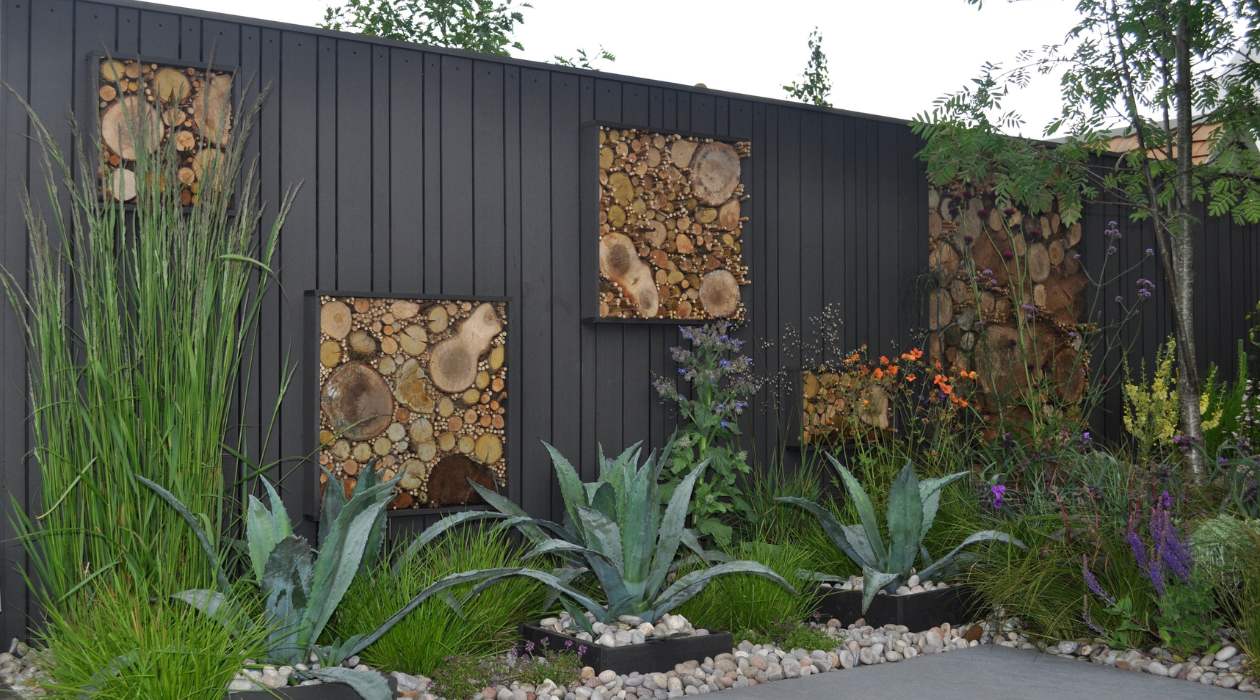

Garden Storage
Wildlife Garden Ideas: Turn A Backyard Into A Natural Haven
Modified: January 6, 2024
Transform your backyard into a storage haven with these ingenious wildlife garden ideas. Create a natural sanctuary that conserves space while supporting local wildlife.
(Many of the links in this article redirect to a specific reviewed product. Your purchase of these products through affiliate links helps to generate commission for Storables.com, at no extra cost. Learn more)
Introduction
Creating a wildlife garden is not only a beautiful and rewarding way to landscape your backyard, but it is also a meaningful way to contribute to the conservation of local biodiversity. By designing your garden to attract and support various species of wildlife, you can turn your outdoor space into a natural haven that benefits both the environment and the creatures that call it home.
In a world where natural habitats are rapidly disappearing, wildlife gardens play a crucial role in providing much-needed habitats and resources for birds, butterflies, bees, and other pollinators. These spaces create connections between isolated pockets of greenery, allowing wildlife to move freely and ensuring the continued survival of species.
But creating a wildlife garden goes beyond planting a few flowers and shrubs. It requires careful planning and consideration of the needs of different wildlife species. From choosing native plants that provide food and shelter to incorporating water features and utilizing sustainable gardening practices, there are several elements to consider when designing a thriving wildlife garden.
In this article, we will explore the various aspects of creating a wildlife garden. We will delve into the importance of planning and selecting native plants, as well as providing food sources and shelter for wildlife. We will also discuss the benefits of incorporating water features, using sustainable gardening practices, and attracting specific wildlife such as birds, butterflies, and bees.
Whether you have a sprawling backyard or a small urban balcony, there are numerous ways to transform your outdoor space into a haven for wildlife. By following these wildlife garden ideas and practices, you can make a positive impact on your local ecosystem and enjoy the beauty of nature right in your own backyard.
So, let’s embark on this exciting journey to create a wildlife garden together. Get ready to be inspired by the wonders of nature and discover ways to bring wildlife closer to home.
Key Takeaways:
- Creating a wildlife garden is a meaningful way to support local biodiversity, attract birds, butterflies, and bees, and enjoy the beauty of nature right in your own backyard. It requires careful planning, native plants, and sustainable practices.
- Attracting wildlife to your garden involves providing food sources, water features, shelter, and nesting sites. Embracing natural pest management and continuous learning through resources enriches the wildlife gardening experience.
Why Create a Wildlife Garden?
Creating a wildlife garden is not just about adding aesthetic appeal to your outdoor space, but it also serves a greater purpose in conserving and protecting local biodiversity. Here are some reasons why you should consider creating a wildlife garden:
1. Promote Biodiversity: By designing your garden to attract a variety of wildlife, you are actively supporting the local ecosystem. Wildlife gardens provide habitats, food sources, and breeding areas for various animal species, including birds, butterflies, bees, and beneficial insects. This helps to maintain a healthy and diverse ecosystem and supports the overall balance of nature.
2. Preserve Native Species: Wildlife gardens play a crucial role in preserving native plant and animal species. By choosing native plants for your garden, you are providing a familiar and suitable habitat for local wildlife. Native plants have evolved to thrive in the local climate and soil conditions, making them resilient and attractive to native insects, birds, and other animals.
3. Enhance Pollination: Bees and other pollinators are vital for the reproduction of many plants, including food crops. By creating a wildlife garden that attracts pollinators, you are helping to ensure the pollination of plants in your area. This not only benefits your own garden but also contributes to the larger ecosystem and supports agricultural productivity.
4. Conserve Water and Reduce Pollution: Wildlife gardens often incorporate sustainable gardening practices, such as water-wise landscaping and natural pest control methods. By using techniques like collecting rainwater, planting drought-resistant plants, and avoiding chemical pesticides and fertilizers, you can contribute to water conservation and reduce pollution in your local environment.
5. Enjoy a Thriving Garden: A wildlife garden is not only beneficial for wildlife but also provides a visually appealing and engaging outdoor space for you to enjoy. Watching birds feed on nectar-rich flowers, observing butterflies fluttering around, and hearing the buzzing of bees can bring a sense of tranquility and connection with nature. It is a place where you can relax, unwind, and appreciate the beauty of the natural world.
By creating a wildlife garden, you can make a positive impact on the environment and contribute to the conservation of wildlife in your area. It is a rewarding and fulfilling way to connect with nature, educate yourself and others about the importance of biodiversity, and create a sustainable and vibrant ecosystem right in your own backyard. So, why not take the leap and start planning your wildlife garden today?
Planning Your Wildlife Garden
Creating a successful wildlife garden requires careful planning to ensure that you provide the right conditions for attracting and supporting a diverse range of wildlife species. Here are some key steps to consider when planning your wildlife garden:
1. Assess Your Space: Start by evaluating your outdoor space to determine the available areas for creating your wildlife garden. Consider factors such as sunlight exposure, soil type, and existing vegetation. This assessment will help you determine where to focus your efforts and which plants and features will thrive in specific areas.
2. Set Goals: Define your goals for the wildlife garden. Are you primarily interested in attracting specific wildlife, such as birds or butterflies? Or do you want to create a diverse habitat for a range of species? Setting clear goals will guide your planning decisions and help you prioritize the elements you need to incorporate into your garden.
3. Research Local Wildlife: Study the wildlife species that are native to your region. Determine which animals, birds, and insects you want to attract to your garden based on their ecological importance and your personal interests. Understanding their habitat requirements, feeding habits, and nesting preferences will inform your plant choices and garden design.
4. Create Diversity: Aim for a variety of plant species that provide different types of food, shelter, and nesting materials. Incorporate a mix of native trees, shrubs, wildflowers, and grasses to create different layers and textures in your garden. This diversity will attract a wider range of wildlife, as each species has unique preferences.
5. Select Native Plants: Native plants are key to a successful wildlife garden. They have adapted to the local climate, soil conditions, and the needs of local wildlife. Choose a mix of flowering plants that provide nectar for pollinators, plants that produce berries or seeds for birds, and plants that support caterpillars as a food source for butterflies.
6. Incorporate Water Features: Wildlife requires a water source for drinking and bathing. Include a birdbath, a small pond, or even a shallow dish filled with water to provide a reliable water supply. Ensure that the water feature has a sloping entry or rocks for easy access and add floating plants or shallow pots for insects and amphibians.
7. Create Shelter and Nesting Sites: Wildlife needs places to hide, rest, and nest. Provide natural shelter options like dense shrubs, brush piles, and rock features. Install bird boxes, bat houses, and bee hotels in suitable locations to attract nesting species. Consider including hollow logs or fallen branches for insects and small mammals.
8. Minimize Chemical Use: Avoid using chemical pesticides and herbicides in your garden, as they can harm wildlife and disrupt the balance of the ecosystem. Instead, employ natural pest control methods like companion planting, encouraging beneficial insects, and hand-removal of pests. Embrace organic gardening practices to create a safe and healthy environment for wildlife.
Remember that a wildlife garden is a dynamic and evolving space. Regularly observe and assess your garden to make adjustments as needed. As your garden develops, it will attract a growing diversity of wildlife, providing you with endless opportunities to connect with the natural world and contribute to the conservation of local biodiversity.
Choosing Native Plants
Choosing native plants is a crucial step in creating a successful wildlife garden. Native plants have evolved in your region, making them well-suited to the local climate, soil conditions, and the needs of native wildlife. By incorporating native plants into your garden, you provide a reliable source of food and shelter for local wildlife. Here are some tips for choosing native plants:
1. Research Native Plant Species: Start by researching the native plant species that are indigenous to your region. Look for plants that are adapted to your specific location, taking into account factors such as temperature, rainfall, and soil composition. Local botanical gardens, nurseries, or native plant societies can be valuable resources for information on native plants in your area.
2. Consider Ecological Value: Select plants that have high ecological value and support a wide range of wildlife. Look for plants that provide nectar-rich flowers for pollinators, seeds or berries for birds, and foliage for caterpillars. These plants will attract and sustain a diverse array of wildlife species, creating a thriving ecosystem in your garden.
3. Choose a Variety of Bloom Times: Incorporate plants that bloom at different times throughout the year. This ensures a continuous supply of nectar and pollen for pollinators throughout the seasons. Native plants that flower in early spring, summer, and fall will attract and support a diverse range of butterflies, bees, and other beneficial insects.
4. Create Layers in Your Garden: Aim to create a vertical structure in your garden by selecting plants of varying heights and growth habits. This will provide different levels of shelter and foraging opportunities for wildlife. Trees and tall shrubs can provide nesting sites and perches for birds, while low-growing plants and grasses can offer cover for small mammals and insects.
5. Embrace Native Grasses and Wildflowers: Native grasses and wildflowers are excellent choices for a wildlife garden. They provide essential habitats for a variety of insects, offering shelter, nesting sites, and food sources. These plants also add visual interest and create a naturalistic and meadow-like atmosphere in your garden.
6. Consider Host Plants for Butterflies: Many butterfly species have specific host plants on which their caterpillars feed. Research the butterflies native to your area and provide their host plants to encourage their presence in your garden. For example, monarch butterflies rely on milkweed plants as their host and food source for their caterpillars.
7. Opt for Diversity: Aim for a diverse mix of plant species in your wildlife garden. Diversity will attract a broader range of wildlife and increase the overall resilience of your ecosystem. Avoid planting large monocultures of the same species, as this limits the resources available to wildlife and can lead to imbalances in the garden.
8. Consider Maintenance and Invasive Species: Be mindful of the maintenance requirements of the plants you choose. Select plants that are well-suited to your gardening skills and the time you are willing to invest in maintenance. Additionally, be cautious of planting invasive species that can outcompete native plants and negatively impact the local ecosystem.
By choosing native plants, you not only provide essential resources for wildlife but also contribute to the preservation of local biodiversity. Your garden will become a vital steppingstone in connecting fragmented habitats and supporting the survival of native species. Embrace the beauty and benefits of native plants in your wildlife garden and watch as your space comes alive with the vibrant sights and sounds of nature.
Remember to validate your HTML encoding.
Providing Food Sources
One of the key elements of a wildlife garden is providing a diverse and reliable food source for the wildlife species you wish to attract. By offering a variety of plants and supplementary feeding options, you can ensure that your garden becomes a haven for birds, butterflies, bees, and other pollinators. Here are some tips for providing food sources in your wildlife garden:
1. Plant Native Trees and Shrubs: Native trees and shrubs provide a wealth of food options for wildlife. Their flowers, fruits, and seeds are a natural source of nourishment for birds and small mammals. Choose species that are known to produce fruits or berries, such as elderberry, serviceberry, or dogwood. These plants not only provide food but also offer cover and nesting opportunities.
2. Incorporate Nectar-Rich Flowers: Plant a variety of nectar-rich flowers to attract butterflies, bees, and hummingbirds. Native wildflowers such as coneflowers, bee balm, and milkweed are particularly attractive to these pollinators. Aim for a mix of early-, mid-, and late-season blooming plants to provide a continuous food source throughout the year.
3. Include Seed-Bearing Plants: To attract seed-eating birds, incorporate plants that produce seeds, such as sunflowers, black-eyed Susans, and native grasses. These plants provide a valuable food source in the late summer and fall when natural seed supplies may be scarce.
4. Install Bird Feeders: Bird feeders filled with high-quality birdseed can supplement the natural food sources in your garden. Opt for feeders that are suitable for specific bird species, such as nyjer feeders for finches or suet feeders for woodpeckers. Place feeders away from windows and in locations where birds have a clear view of any potential predators.
5. Provide Water Sources: Fresh water is essential for wildlife. Create shallow dishes, birdbaths, or small ponds in your garden to provide a reliable water source for drinking and bathing. Ensure that the water is clean and regularly replenished to attract birds, butterflies, and other creatures.
6. Leave Fallen Fruits: Allow fallen fruits from trees to remain on the ground, as they provide a valuable food source for ground-feeding birds and mammals. Fallen apples, berries, or nuts can attract species such as robins, squirrels, and chipmunks.
7. Incorporate Butterfly Host Plants: Certain plant species are vital as host plants for butterfly larvae. For example, milkweed is essential for monarch butterflies to lay their eggs and provide food for the developing caterpillars. Incorporate these host plants to support the complete lifecycle of butterflies in your garden.
8. Avoid Chemical Pesticides: Chemical pesticides can be harmful to wildlife, including the insects that serve as a food source for birds and other animals. Instead, focus on natural pest control methods, such as companion planting, encouraging beneficial insects, and handpicking pests, to maintain a healthy balance in your garden.
By providing a variety of food sources in your wildlife garden, you can attract a broad range of wildlife species and create a thriving ecosystem. Remember to maintain these food sources throughout the year by ensuring a continuous supply of nectar, berries, seeds, and other resources. With these abundant food options, your garden will become a vibrant hub of activity and an oasis for the local wildlife to thrive.
Read more: Great Backyard Pond Ideas For Your Garden
Creating Water Features
Water features are essential components of a thriving wildlife garden. They provide a reliable water source for drinking, bathing, and breeding for various animal species. By incorporating water features into your garden, you can attract a wide range of wildlife, including birds, butterflies, amphibians, and even beneficial insects. Here are some tips for creating water features in your wildlife garden:
1. Birdbaths: Birdbaths are simple and effective water features that attract birds of all sizes. Choose a shallow basin with a textured surface to provide secure footing for birds. Place the birdbath in an open area, away from dense vegetation and potential predators. Keep the water level shallow to ensure safety for smaller birds and refill the bath with fresh water regularly.
2. Small Ponds: If space allows, consider adding a small pond to your wildlife garden. A pond provides a more natural water environment and can attract a wider range of wildlife, such as frogs, dragonflies, and even fish. Ensure that the pond has a gentle sloping edge or rocks to allow easy access for animals to enter and exit the water.
3. Waterfalls or Cascades: If you want to add a visually appealing element to your water feature, consider incorporating a small waterfall or cascades. The sound of running water is attractive to birds, while the flowing water itself provides a constant source of fresh water.
4. Miniature Streams: Constructing a miniature stream can create a meandering water feature that adds interest and movement to your wildlife garden. Use rocks and stones to create a shallow channel and direct the water flow. The shallow areas of the stream can provide drinking spots for birds and other small animals.
5. Drippers and Misters: Install drippers or misters near water sources to simulate rainfall and add to the inviting atmosphere of your water feature. The sound and movement of dripping or misting water can attract birds that are drawn to the sound of trickling water.
6. Water Containers: Repurposed containers, such as small barrels or pots without drainage holes, can be used as miniature water features. Fill them with water and place them strategically throughout your garden. These containers can provide a much-needed water source for wildlife, especially during dry periods.
7. Safety Precautions: When creating water features, it’s important to consider the safety of wildlife. Ensure that there are shallow areas or rocks for animals to land on or rest, especially in ponds or birdbaths. Adding floating plants, such as water lilies or duckweed, can also provide resting spots for insects and smaller creatures.
8. Maintenance and Hygiene: Regular maintenance is crucial for water features to keep them clean and safe for wildlife. Remove debris like leaves and algae buildup from birdbaths and ponds. Clean birdbaths with a mild solution of water and vinegar to prevent the growth of harmful bacteria. Avoid using chemicals, such as chlorine, as they can be harmful to wildlife.
By incorporating water features into your wildlife garden, you provide essential hydration and bathing opportunities for various species. These water sources become gathering spots for birds to drink and socialize, while also attracting other wildlife to your garden. Remember, the sound and movement of water create a serene and soothing atmosphere that both you and the wildlife can enjoy.
Building Shelter and Nesting Sites
Providing adequate shelter and nesting sites is essential for attracting and supporting wildlife in your garden. By creating a variety of shelter options, you can offer protection from the elements, safe places for wildlife to rest and raise their young, and encourage a diverse array of species to make your garden their home. Here are some tips for building shelter and nesting sites in your wildlife garden:
1. Dense Shrubs and Trees: Planting dense shrubs and trees of different heights provides natural shelter and nesting opportunities for a variety of wildlife. Trees with sturdy branches and dense foliage offer perches and nesting sites for birds. Shrubs with thick growth patterns provide cover and hiding places for small mammals, insects, and nesting birds.
2. Brush Piles: Creating brush piles using fallen branches, twigs, and garden trimmings can provide shelter for a range of wildlife. These piles offer hiding places for small mammals, reptiles, and beneficial insects. Additionally, birds may use the branches for nesting or perching.
3. Nest Boxes: Installing bird boxes or nesting boxes in your garden can attract cavity-nesting bird species. Each bird species has specific requirements for the size and design of the box and the entrance hole diameter. Research the nesting requirements of the species you want to attract and place the boxes at appropriate heights and locations.
4. Bee Hotels: Building or purchasing bee hotels can provide crucial nesting sites for solitary bees. These hotels consist of stacked wooden blocks or tubes that mimic natural nesting locations for bees. Place bee hotels in a sunny spot and ensure they are protected from wind and rain.
5. Bat Boxes: Bats play an important role in controlling insect populations. Installing bat boxes in your garden can provide roosting sites for these beneficial creatures. Position the boxes high up on trees or buildings, facing south or southeast for optimal sun exposure.
6. Rock Piles and Log Stacks: Creating rock piles or log stacks in your garden can provide hiding places, nesting sites, and basking spots for reptiles, amphibians, and some small mammals. Ensure that these features are stable and have spaces for creatures to crawl into or under.
7. Dead Trees and Snag Sites: Leaving dead trees or standing deadwood, also known as snags, can support various ecosystem functions. They provide vital nesting sites for woodpeckers, cavity-nesting birds, and bats. Dead trees also attract insects, which serve as food sources for birds and other animals.
8. Butterfly Puddling Areas: Many butterflies need minerals and moisture from damp soil or mud puddles. Create a small puddling area by moistening a patch of soil, mixing in some sand and minerals, and creating shallow depressions. Butterflies will visit these areas for puddling and obtaining essential nutrients.
Remember to consider the specific habitat requirements and nesting habits of the wildlife species you hope to attract. Creating a diverse range of shelter options ensures that your garden can accommodate a broader array of wildlife and encourages the establishment of a thriving ecosystem. The availability of suitable shelter and nesting sites will make your wildlife garden a haven for various species to find safety, raise their young, and contribute to the overall health and balance of the ecosystem.
Consider planting native wildflowers, shrubs, and trees to attract local wildlife such as birds, butterflies, and bees. Provide water sources like a birdbath or small pond, and create shelter with birdhouses and brush piles. Avoid using pesticides to maintain a healthy ecosystem.
Using Sustainable Gardening Practices
Incorporating sustainable gardening practices into your wildlife garden not only benefits the environment, but it also ensures the long-term health and success of your garden. Sustainable gardening involves using practices that conserve resources, minimize waste, and support the overall well-being of the ecosystem. Here are some tips for practicing sustainable gardening in your wildlife garden:
1. Water Conservation: Use water wisely by collecting rainwater in barrels or using drip irrigation systems. Water the garden during cooler times of the day to minimize evaporation. Group plants with similar water requirements together to optimize water usage. Utilize mulch to retain soil moisture and reduce the need for frequent watering.
2. Organic Pest Control: Avoid the use of synthetic pesticides and herbicides, as they can harm beneficial insects and disrupt the natural balance of your garden. Instead, embrace organic pest control methods. Encourage natural predators like ladybugs and lacewings, use physical barriers like netting to protect crops, and practice companion planting to deter pests.
3. Soil Health: Maintain healthy soil by incorporating organic matter, such as compost or well-rotted manure, to improve its structure and fertility. This will promote healthy plant growth and enhance the overall health of the garden ecosystem. Avoid over-tilling to prevent soil erosion and disturbance of beneficial soil organisms.
4. Native and Low-Maintenance Plants: Choose native plants that are well-adapted to the local climate and require minimal inputs such as water, fertilizers, and pesticides. Native plants are more resilient, as they have evolved to thrive in the local ecosystem. Selecting low-maintenance plants reduces the need for intensive gardening practices and supports the natural balance of the garden.
5. Beneficial Insects and Pollinators: Encourage beneficial insects, such as ladybugs, lacewings, and predatory wasps, to naturally control pest populations. Plant nectar-rich flowers to attract pollinators like bees and butterflies. Avoid the use of broad-spectrum insecticides that can harm these important garden helpers.
6. Composting: Composting kitchen scraps and garden waste reduces waste sent to landfills and provides nutrient-rich soil amendments for your garden. Start a compost pile or use a composting bin to recycle organic matter. Use compost to enrich the soil, improve its water-holding capacity, and promote healthy plant growth.
7. Wildlife-Friendly Structures: Incorporate elements into your garden that provide shelter and resources for wildlife. Build bat boxes, bee hotels, and birdhouses using sustainable materials. Use natural materials like rocks and logs to create habitat features. Avoid plastics and synthetic materials that can be harmful to the environment.
8. Reduce, Reuse, Recycle: Minimize waste in your garden by reusing materials whenever possible. Repurpose old containers as planters, use fallen leaves and garden trimmings for mulch or compost, and choose durable tools and equipment that can be used for many years. Recycle plastic pots and containers or opt for biodegradable alternatives.
By adopting sustainable gardening practices, you can create an environmentally-friendly wildlife garden that supports the natural ecosystem. Not only will your garden benefit from healthier plants and a reduced environmental impact, but it will also provide a sanctuary for wildlife to flourish. Embrace the principles of sustainability in your gardening journey and play your part in creating a greener and more sustainable future for generations to come.
Attracting Birds
Birds bring life, color, and delightful melodies to your wildlife garden. Attracting these feathered friends requires creating a welcoming habitat that provides them with food, water, shelter, and nesting opportunities. Here are some tips for attracting birds to your garden:
1. Native Plants: Plant a diverse selection of native trees, shrubs, and flowers that provide birds with food sources like seeds, berries, and nectar. Research which plant species are particularly attractive to local bird species and consider their preferences for nesting and foraging.
2. Seed-Producing Plants: Include plants that produce seeds, such as sunflowers, coneflowers, and black-eyed Susans. These plants provide a valuable food source for seed-eating birds, including finches and sparrows, especially during the colder months when natural seed supplies may be scarce.
3. Berry-Producing Plants: Choose shrubs and trees that bear fruits or berries, such as serviceberries, holly, or elderberries. These plants attract a variety of bird species, including thrushes, waxwings, and warblers, as they provide a reliable food source rich in nutrients.
4. Native Grasses and Wildflowers: Incorporate native grasses and wildflowers to create a naturalistic meadow-like setting that attracts birds. These plants offer not only food but also shelter and nesting material for ground-feeding birds like sparrows and buntings.
5. Water Source: Provide a clean and shallow birdbath or small pond as a water source for birds to drink and bathe. Change the water regularly to maintain freshness, and consider adding a small water feature like a dripping faucet or mister to attract birds with the sound and movement of running water.
6. Nesting Boxes: Install nesting boxes designed for specific bird species, following their specific requirements for size, shape, and entrance hole dimensions. Position the boxes in safe and secluded areas, away from potential predators, and at appropriate heights to mimic their natural nesting preferences.
7. Provide Shelter: Plant dense shrubs, evergreens, and trees that offer shelter and protection from predators and harsh weather conditions. These sheltered areas also provide nesting sites for birds. Include a mix of tree heights to cater to species with different flight and nesting preferences.
8. Avoid Chemicals: Avoid using synthetic pesticides and herbicides in your garden, as they can harm birds and disrupt the natural balance of the ecosystem. Instead, embrace natural pest control methods and encourage beneficial insects that help keep pest populations in check.
9. Consider Seed Feeders: Supplement natural food sources by offering bird feeders filled with high-quality seeds. Different bird species have specific preferences, so consider providing a variety of seed types to attract a diverse range of birds. Clean and refill feeders regularly to ensure a constant supply of fresh food.
10. Create Nesting Materials: Leave natural materials like twigs, leaves, and plant stems in your garden for birds to gather as nesting materials. You can also provide additional nesting material options, such as string, pet fur, or feathers, which birds may incorporate into their nests.
Remember that attracting birds to your garden takes time. Be patient and allow your garden to establish and mature. Providing a variety of food, water, shelter, and nesting options will gradually attract a diverse array of bird species that will bring joy and beauty to your wildlife garden.
Read more: Backyard Greenhouse Ideas
Attracting Butterflies
Butterflies are not only beautiful and mesmerizing creatures, but they also play a crucial role in pollination and ecosystem health. To attract these delicate winged visitors to your garden, you need to create a suitable habitat that provides them with food sources, host plants for their caterpillars, and elements that support their life cycle. Here are some tips for attracting butterflies to your garden:
1. Plant Nectar-Rich Flowers: Butterflies are attracted to flowers that provide a good source of nectar. Choose a variety of nectar-rich flowers in different colors and shapes to attract a wide range of butterfly species. Some popular choices include butterfly bush, milkweed, coneflower, Liatris, and zinnia.
2. Include Native Plants: Native plants are especially attractive to native butterflies, as they have co-evolved and developed mutual relationships over time. Research which native plants are favored by local butterfly species and incorporate them into your garden. Native plants are more likely to provide the specific nectar sources butterflies need.
3. Create a Sunlit Area: Butterflies are cold-blooded creatures that rely on the sun’s warmth to regulate their body temperature. Create a sunny, open area in your garden where butterflies can bask in the sunlight. This will provide them with the necessary energy to fly and forage for nectar.
4. Provide Shelter: Butterflies seek shelter from harsh weather conditions, strong winds, and predators. Plant shrubs and trees to create sheltered areas where butterflies can rest and take cover. These sheltered spots also serve as important roosting sites during cool evenings and as safe spaces for them to hide from predators.
5. Include Butterfly Host Plants: Different butterfly species have specific host plants that their caterpillars rely on for food and shelter. Research the host plants favored by the butterflies in your region and include them in your garden. For example, monarch butterflies need milkweed as their host plant, while the black swallowtail butterfly prefers plants from the carrot family, such as dill and parsley.
6. Provide Water Sources: Butterflies require water for drinking and to wet their proboscis (tongue) to access nectar. Create shallow puddles or place saucers with moist sand or mud in your garden to provide water sources for butterflies. Remember to keep the water shallow to prevent accidental drowning and place small rocks or pebbles for butterflies to perch on while they drink.
7. Avoid Pesticides: Avoid using pesticides in your garden, as they can harm not only the target pests but also beneficial insects like butterflies. Embrace natural pest control methods and work towards creating a balanced ecosystem where butterflies and other insects can thrive.
8. Group Plants for Easy Navigation: Plant flowers in clusters or groups rather than scattering them throughout your garden. This helps butterflies easily locate the nectar sources, making their foraging more efficient. It also provides a concentrated and visually appealing area for butterfly watching.
9. Provide a Mixture of Flower Colors and Shapes: Butterflies are attracted to a variety of flower colors and shapes. Include flowers with different hues and petal arrangements to create an enticing visual display. Butterflies have different color preferences, so a diverse range of flowers will help attract a wider variety of species.
10. Embrace Organic Gardening Practices: Practice organic gardening by using natural fertilizers and compost to nourish your plants. This helps to maintain a healthy ecosystem and prevents the accumulation of harmful chemicals that may interfere with butterfly reproduction and survival.
By incorporating these tips into your garden, you can create a welcoming and vibrant habitat that attracts butterflies of all shapes, sizes, and colors. As butterflies flutter around, sipping nectar and laying eggs on host plants, you will not only enjoy their beauty but also play a part in preserving these enchanting creatures for future generations to appreciate.
Attracting Bees and Other Pollinators
Bees and other pollinators are vital for the health of ecosystems and the successful reproduction of many plants, including food crops. By creating a pollinator-friendly garden, you can help support these important creatures and ensure the continued pollination of plants. Here are some tips for attracting bees and other pollinators to your garden:
1. Plant a Variety of Blooming Plants: Bees and pollinators are attracted to a diverse selection of flowers that provide nectar and pollen. Plant a mix of flowering plants that bloom at different times throughout the year to provide a continuous food source. Include varieties with different shapes, colors, and sizes to appeal to a wide range of pollinators.
2. Choose Native Plants: Native plants are adapted to the local climate and have evolved in tandem with local pollinators. They provide familiar and reliable sources of nectar and pollen for native bees and other pollinators. Research which native plants are favored by local pollinators in your area and incorporate them into your garden.
3. Opt for Single-Bloom Flowers: Single-bloom flowers have a single row of petals, making it easier for bees and other pollinators to access the nectar and pollen. Flowers with complex petals and double blooms can make it more challenging for pollinators to reach the reward. Examples of single-bloom flowers include sunflowers, cosmos, and poppies.
4. Provide a Water Source: Create a shallow water source in your garden to provide bees and other pollinators with a place to drink. Fill a shallow dish or birdbath with water and add small stones or pebbles for insects to land on safely. Place the water source near flowering plants to attract pollinators as they search for food.
5. Create Nesting Sites: Many bees are solitary creatures that nest in holes or tunnels. Provide nesting sites by leaving areas of bare ground, creating small piles of logs or twigs, or installing bee houses made of wood or bamboo tubes. These nesting sites will encourage bees to visit and potentially establish a breeding population in your garden.
6. Limit Pesticide Use: Pesticides can be harmful to bees and other pollinators. Minimize or avoid the use of pesticides in your garden, especially during the blooming period. Consider natural pest control methods, such as companion planting, attracting beneficial insects, and handpicking pests.
7. Plant for All Seasons: Ensure that your garden has a selection of plants that bloom throughout the different seasons. This will provide a steady supply of food for bees and other pollinators throughout the year. Include early spring bloomers like crocuses and dandelions, summer favorites like lavender and coneflowers, and fall-blooming plants such as aster and goldenrod.
8. Offer Shelter and Protection: Bees and other pollinators need shelter from weather extremes and predators. Plant dense shrubs, provide rock or log piles, and avoid excessive tidiness in your garden. These shelters will provide hiding places and nesting sites for pollinators.
9. Avoid Genetically Modified Plants: Genetically modified plants (GMOs) may contain modifications that affect or eliminate their value as a food source for pollinators. Whenever possible, choose non-GMO plants to ensure they provide the necessary nectar and pollen for bees and other pollinators.
10. Spread the Word: Educate others about the importance of bees and pollinators for our environment and food supply. Encourage your neighbors and community members to create pollinator-friendly gardens. Collective efforts can create a network of pollinator habitats that support wider populations of bees and other pollinators.
By following these tips, you can create a welcoming environment that attracts bees and other pollinators to your garden. Your efforts will not only provide them with food and shelter but also contribute to the important work of pollination, benefiting the health and abundance of plants in your local ecosystem.
Managing Pests Naturally
Managing pests in your garden is essential for maintaining the health and vitality of your plants. However, relying on synthetic pesticides can have negative effects on beneficial insects like pollinators and disrupt the balance of your garden ecosystem. Instead, consider implementing natural pest management techniques that are effective and environmentally friendly. Here are some tips for managing pests naturally in your garden:
1. Identify and Monitor: Regularly inspect your plants for signs of pests such as chewed leaves, discolored spots, or wilting. Identify the specific pest causing the damage to determine the best course of action. Proper identification will help you implement targeted control methods.
2. Companion Planting: Practice companion planting by growing pest-repellent plants alongside susceptible plants. For instance, planting marigolds, garlic, or chives near vegetables will help deter pests like aphids and nematodes. Additionally, attracting beneficial insects like ladybugs, lacewings, or hoverflies through companion planting can help control pest populations naturally.
3. Hand-Picking: For larger pests like caterpillars or slugs, manually remove them from your plants and dispose of them in a bucket of soapy water or relocate them away from your garden. Regularly inspect plants, especially the undersides of leaves where pests often hide.
4. Biological Control: Introduce beneficial insects or organisms to naturally control pest populations. Ladybugs, praying mantises, and nematodes are examples of predatory species that feed on common garden pests. You can purchase these beneficial insects from garden centers or attract them by providing suitable habitats and plants they prefer.
5. Homemade Remedies: Create homemade pest deterrents using natural ingredients. For example, a solution of water and dish soap can be sprayed on plants to control soft-bodied insects like aphids. Neem oil, derived from neem tree seeds, is effective against various pests and can be mixed with water and applied to plants.
6. Trap Crops: Plant trap crops that attract pests away from your main crops. For instance, planting radishes or nasturtiums can divert pests like aphids or flea beetles from your prized vegetables. Regularly monitor trap crops and dispose of pests once they accumulate.
7. Organic Mulch: Apply organic mulch, such as wood chips or straw, around plants to suppress weeds and create a barrier for certain pests. Mulch also helps retain soil moisture and regulate temperature, benefiting the overall health of your plants.
8. Crop Rotation: Implement a crop rotation plan to disrupt the life cycles of pests that target specific plants. Moving plants to different locations each year can help reduce pest populations, as the pests may struggle to locate their preferred hosts.
9. Physical Barriers: Use physical barriers like row covers or netting to protect plants from flying pests or larger animals. These barriers prevent pests from accessing your plants while still allowing sunlight, water, and airflow.
10. Healthy Garden Practices: Maintain a healthy garden environment by providing proper soil nutrition, adequate watering, and appropriate spacing between plants. Healthy plants are more resistant to pests and diseases. Remove dead or diseased plant material promptly to prevent the spread of pests and pathogens.
By implementing these natural pest management techniques, you can minimize the impact of pests on your garden while maintaining a healthy and thriving ecosystem. Remember that a balanced garden with a diversity of plants and beneficial insects can often self-regulate pest populations. Embrace these natural methods, and you’ll create a resilient and sustainable garden that flourishes with minimal reliance on synthetic pesticides.
Resources for Further Learning
Creating a wildlife garden is a journey of continuous learning and discovery. To deepen your knowledge and explore additional resources, consider the following options:
1. Books: There are numerous books available that provide in-depth information on wildlife gardening, native plants, and attracting specific species. Some recommended titles include “Bringing Nature Home” by Douglas W. Tallamy, “The Wildlife-Friendly Vegetable Gardener” by Tammi Hartung, and “Attracting Native Pollinators” by The Xerces Society.
2. Online Articles and Blogs: Many gardening websites and blogs offer valuable information and tips on wildlife gardening. Explore websites like the National Wildlife Federation (www.nwf.org), The Wildlife Trusts (www.wildlifetrusts.org), and The Pollinator Partnership (www.pollinator.org) for articles, guides, and resources.
3. Cooperative Extension Services: Cooperatives Extension Services, available in many states, offer research-based information and expertise on gardening. They provide resources, workshops, and guidance on various topics, including wildlife-friendly gardening practices. Check with your local extension office for resources and educational materials.
4. Local Garden Centers: Visit your local garden centers and nurseries. They often have knowledgeable staff who can provide guidance on selecting native plants, attracting wildlife, and managing garden pests naturally. Ask for recommendations on books, workshops, or events focused on wildlife gardening in your area.
5. Wildlife Groups and Clubs: Join local wildlife enthusiast groups or gardening clubs that focus on wildlife-friendly gardening. These groups often organize events, visits to wildlife garden sites, and provide opportunities to connect with like-minded individuals who can share their experiences and knowledge.
6. Native Plant Societies: Native plant societies are valuable resources for learning about and promoting the use of native plants in gardening. These organizations often offer educational materials, plant sales, and workshops on wildlife gardening. Search for a native plant society in your region to access expertise and resources specific to your area.
7. Citizen Science Projects: Participate in citizen science projects that focus on wildlife and garden-related research. Projects like the Great Sunflower Project, the Bumblebee Conservation Trust, and eBird allow you to contribute to data collection and monitoring efforts while expanding your knowledge of pollinators and wildlife.
8. Local Nature Centers and Botanic Gardens: Visit local nature centers, botanical gardens, and wildlife preserves. These institutions often have educational exhibits, guided tours, workshops, and events that focus on wildlife conservation, native plants, and gardening for biodiversity. Take advantage of their resources and opportunities to learn directly from experts.
Remember, each region has unique flora and fauna, so seek out resources and organizations that are specific to your local area for the most relevant and accurate information. Embrace the joy of learning and connecting with nature as you continue your wildlife gardening journey.
Frequently Asked Questions about Wildlife Garden Ideas: Turn A Backyard Into A Natural Haven
Was this page helpful?
At Storables.com, we guarantee accurate and reliable information. Our content, validated by Expert Board Contributors, is crafted following stringent Editorial Policies. We're committed to providing you with well-researched, expert-backed insights for all your informational needs.

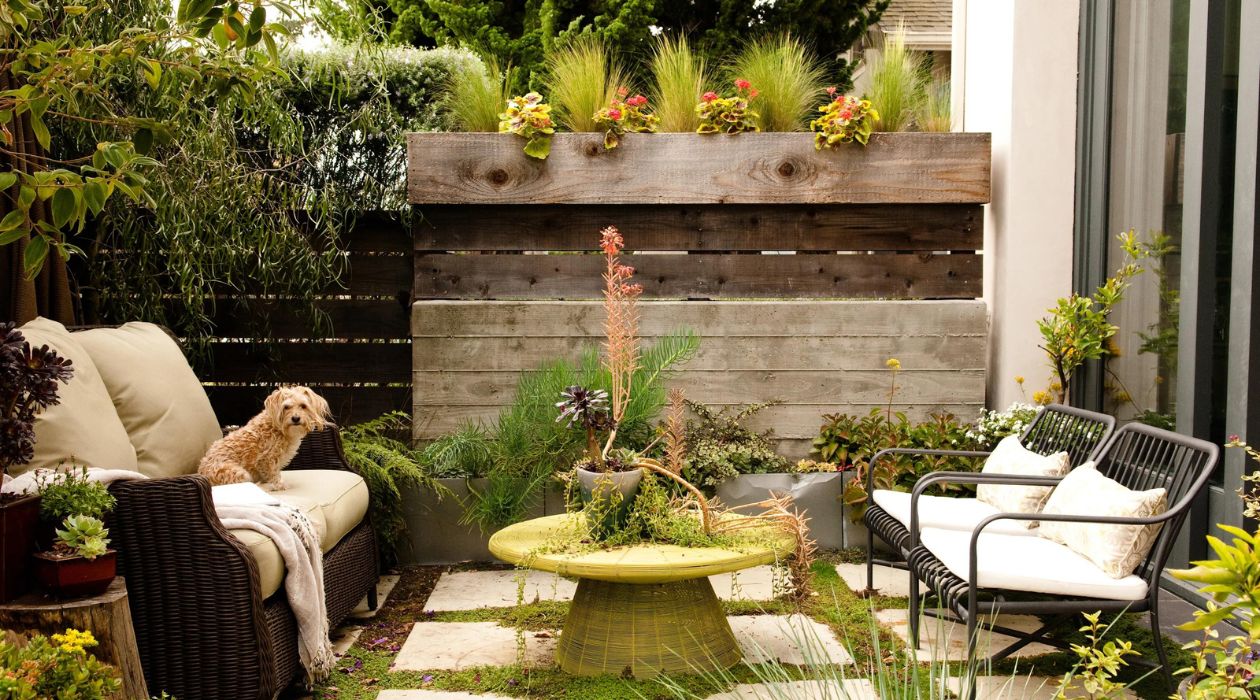
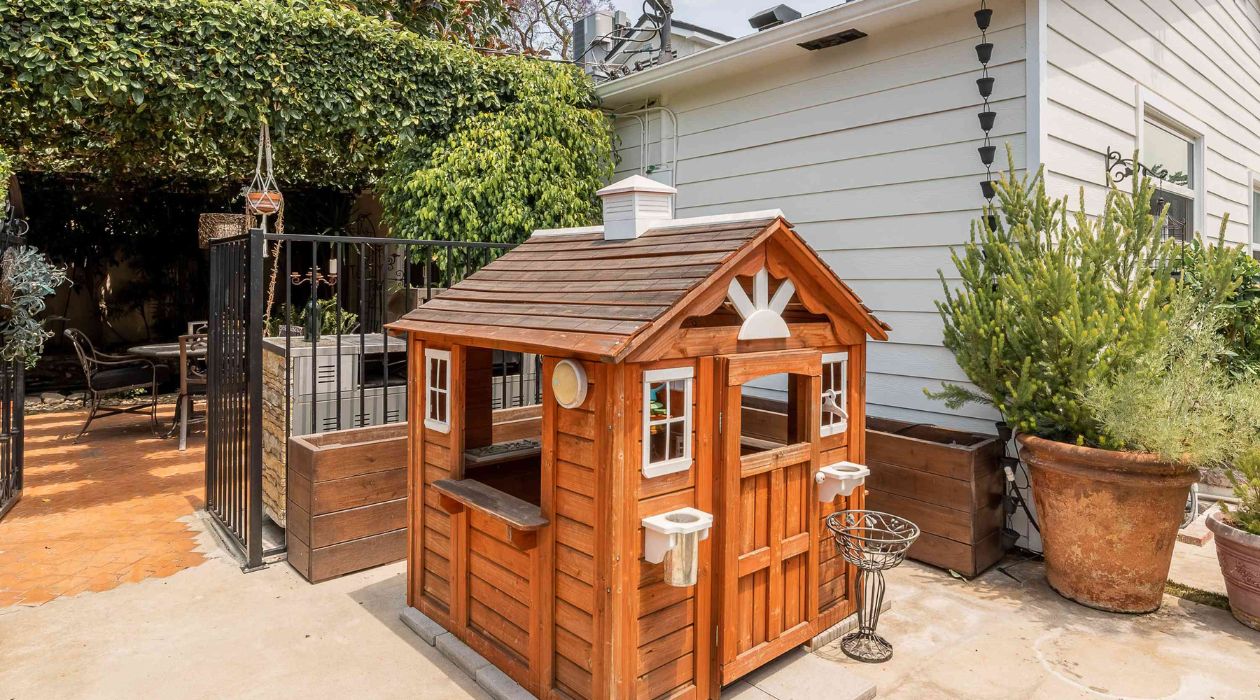

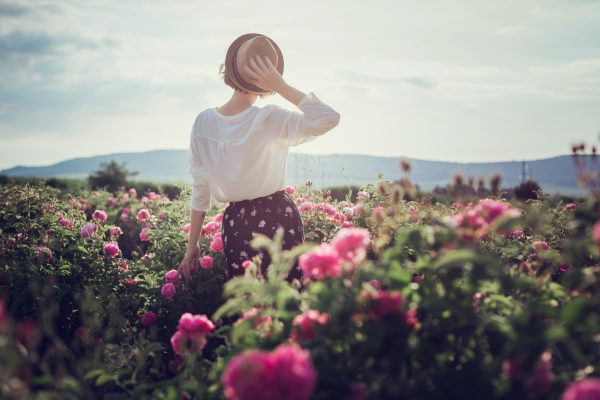
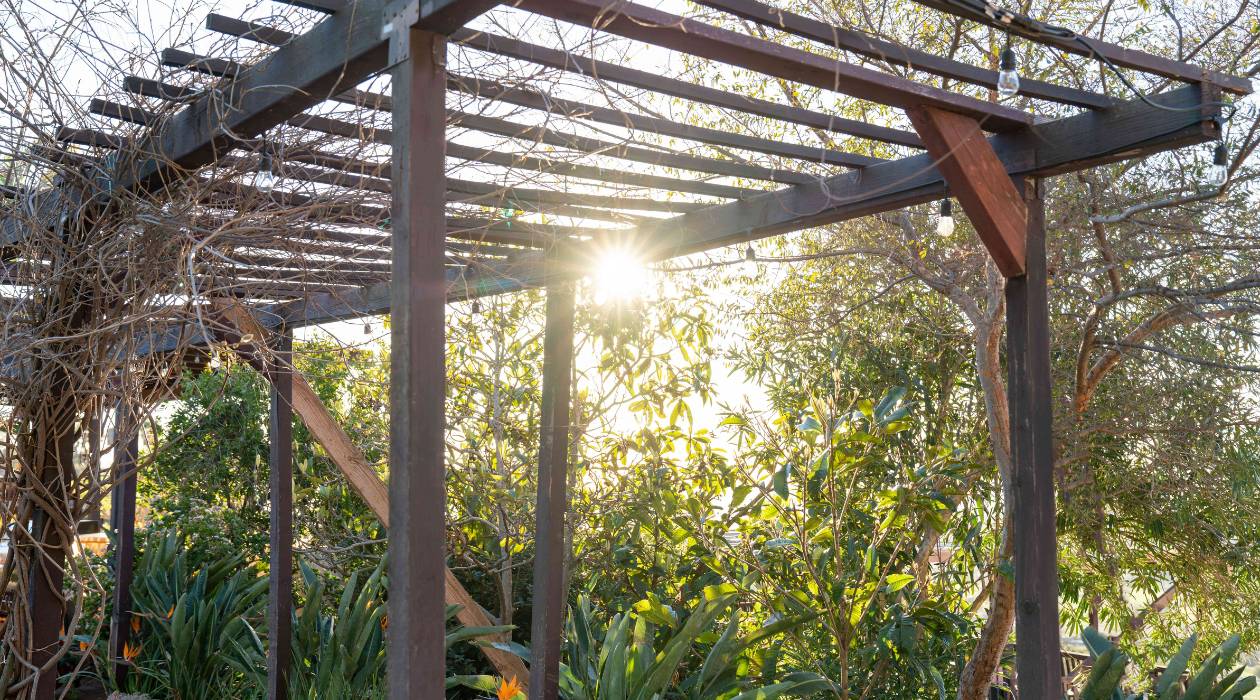
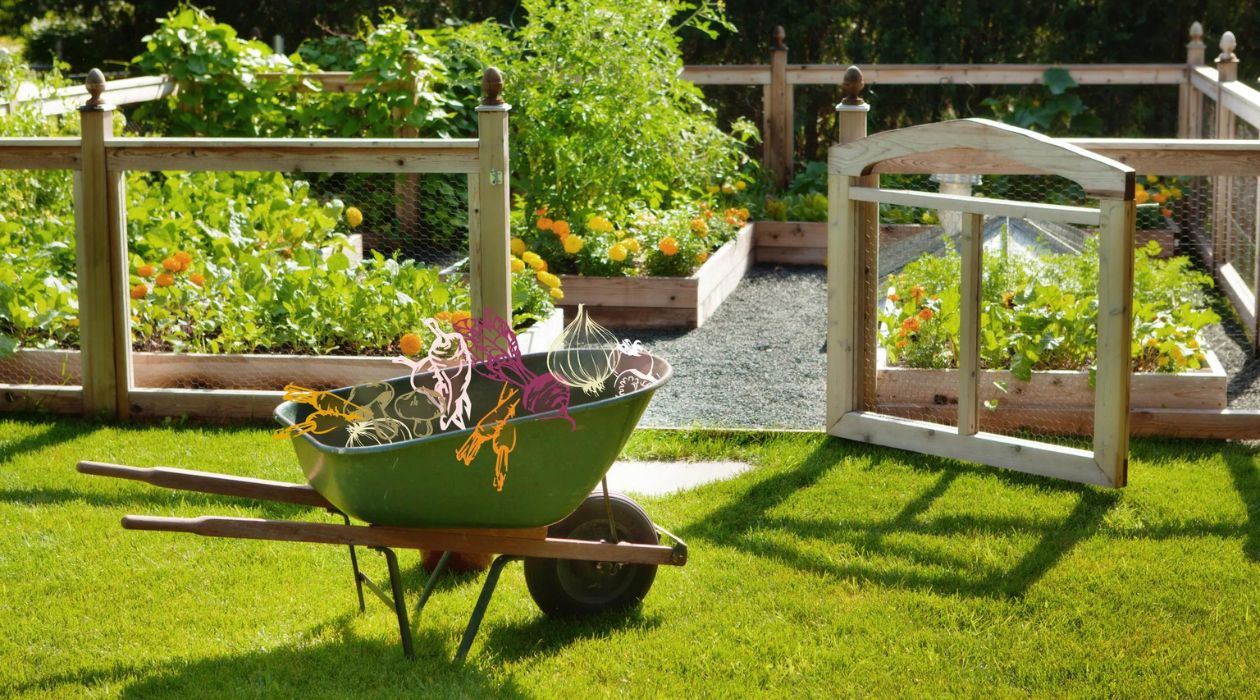
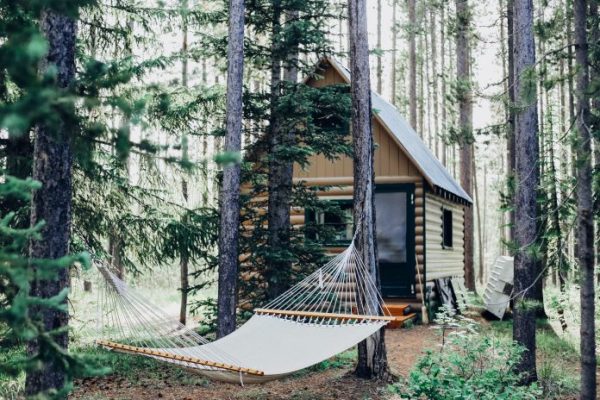

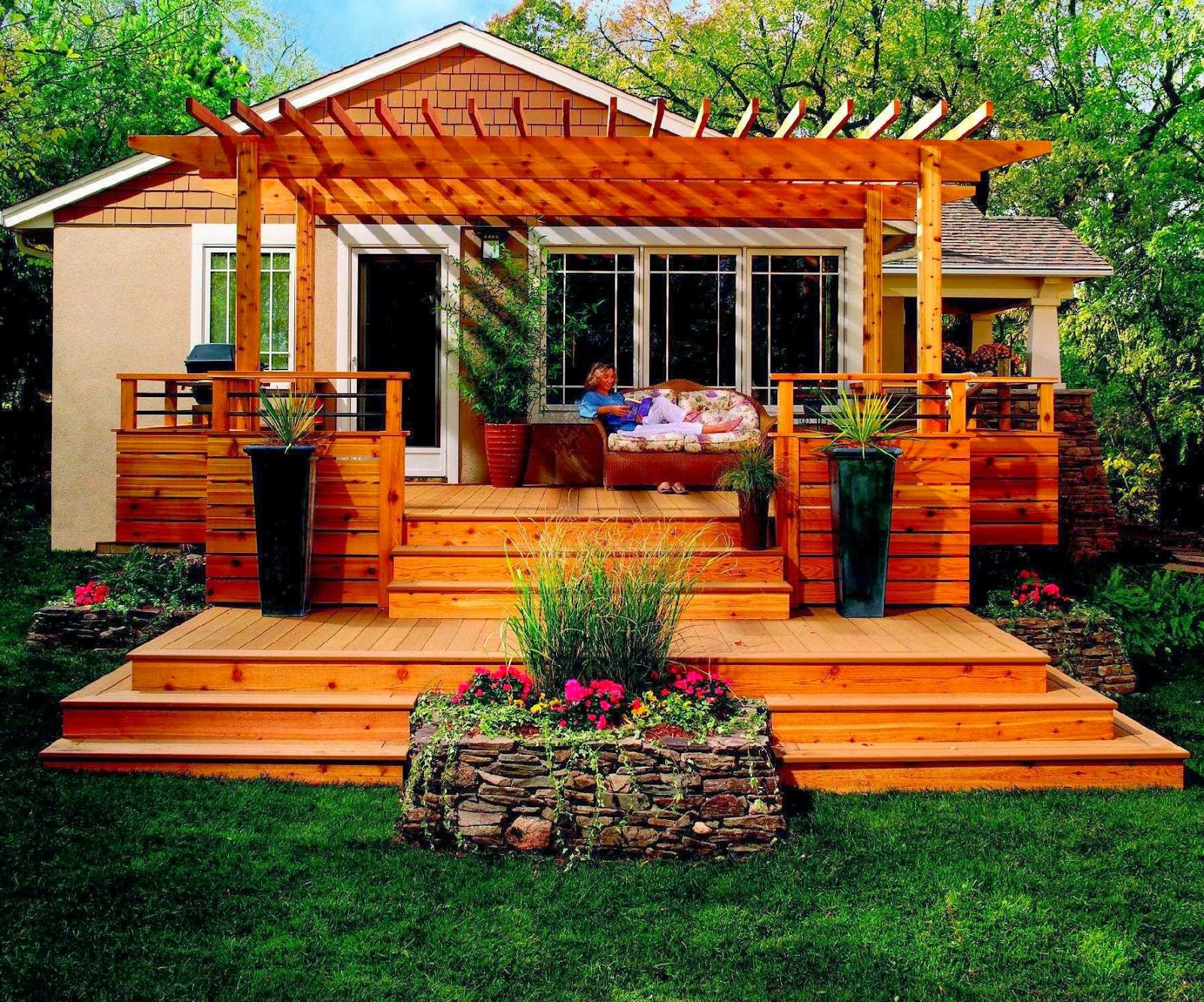
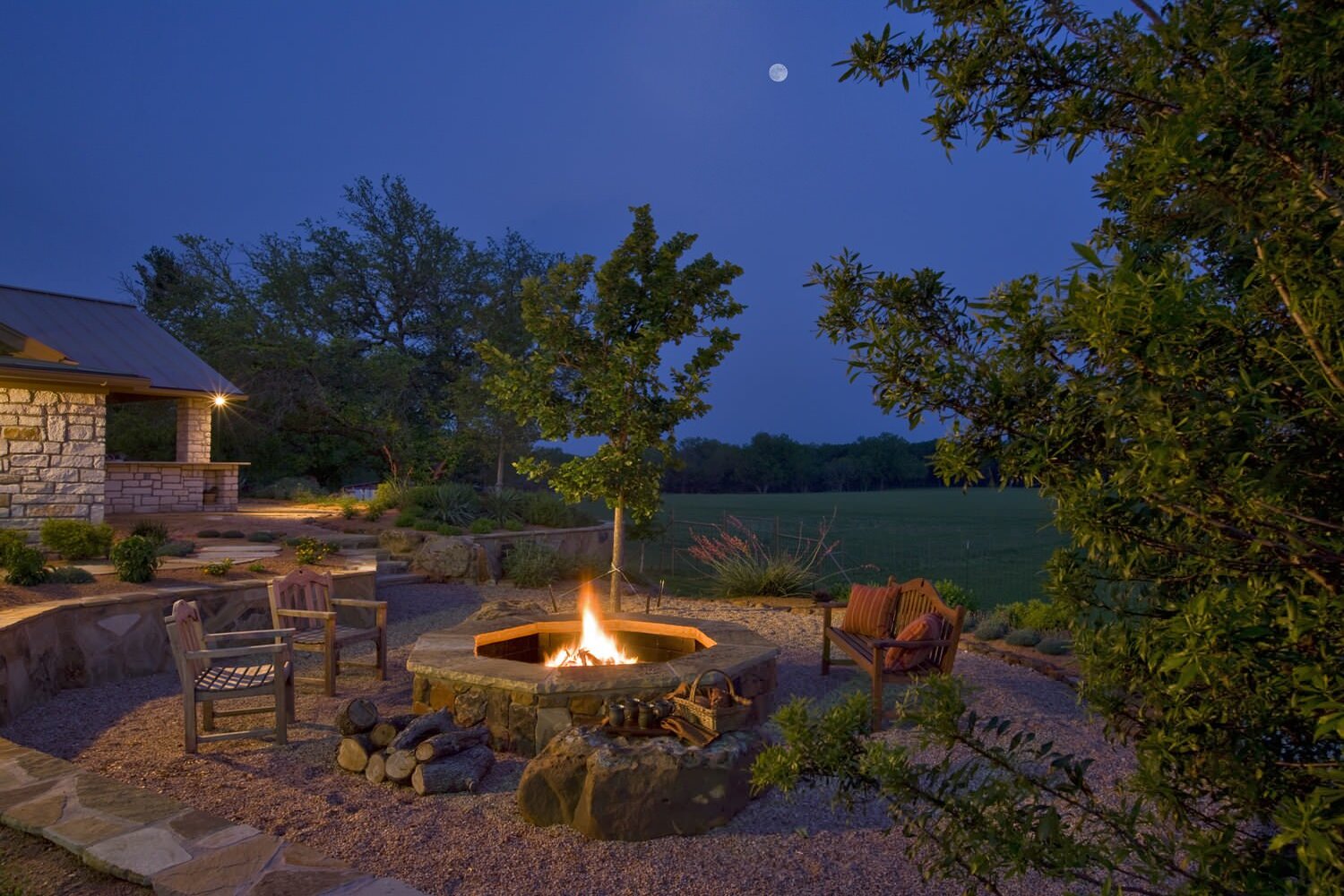

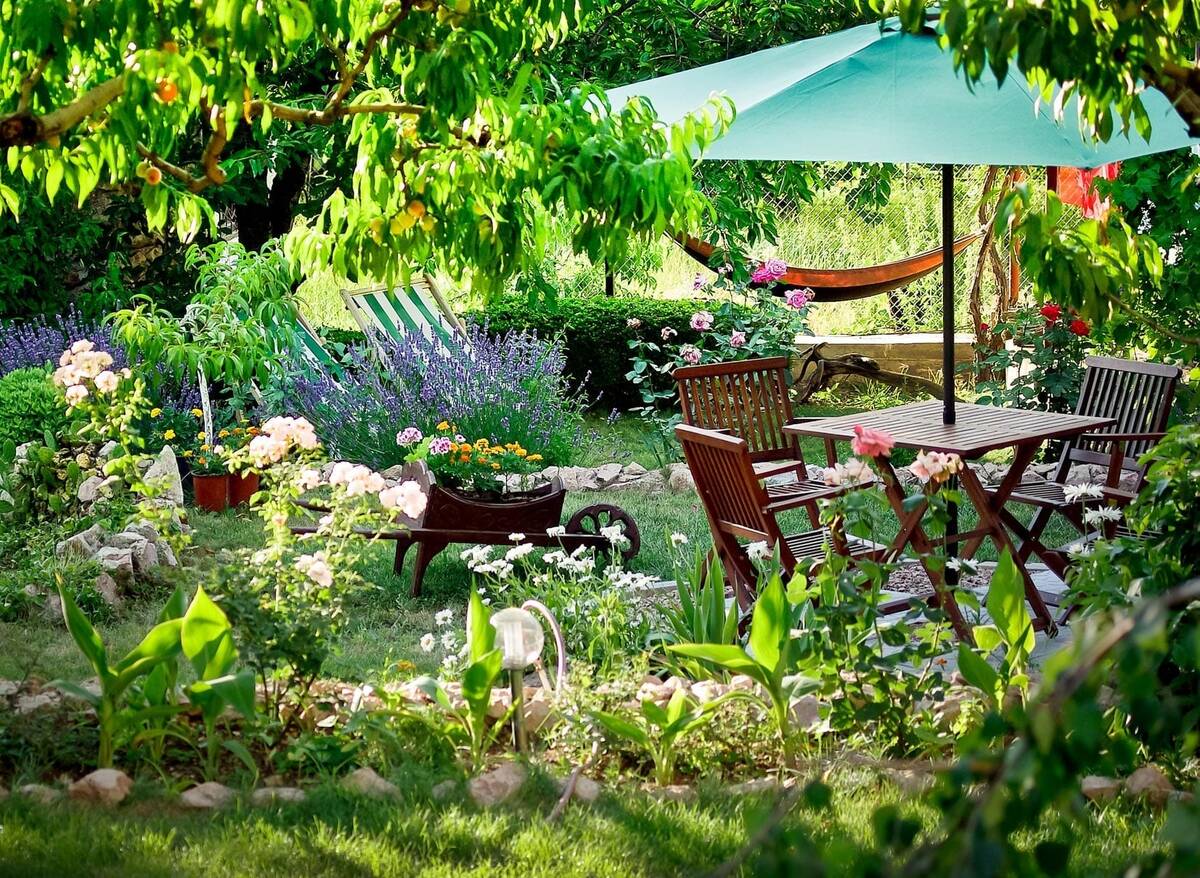

0 thoughts on “Wildlife Garden Ideas: Turn A Backyard Into A Natural Haven”